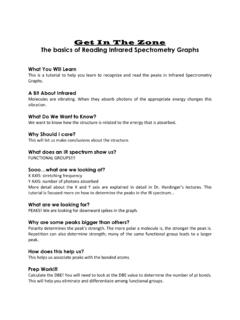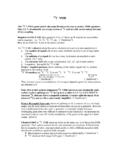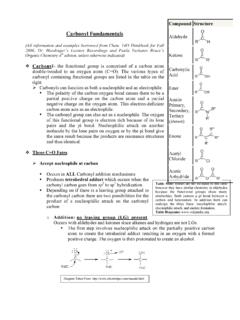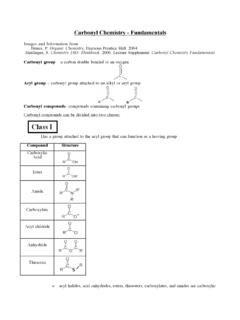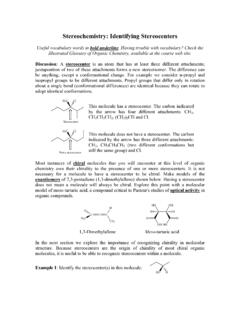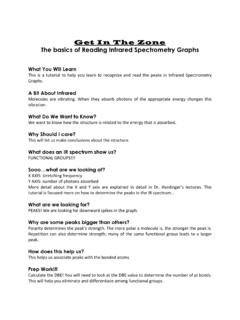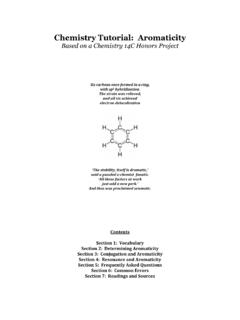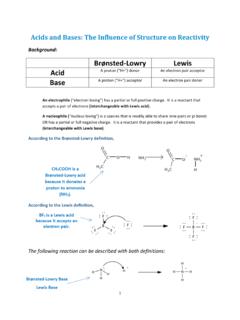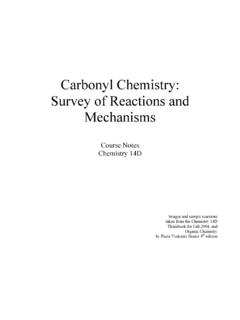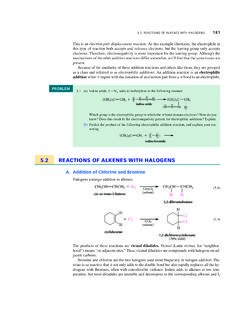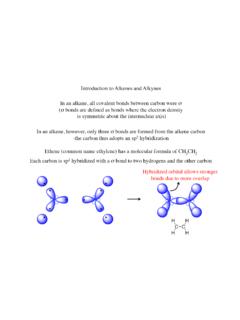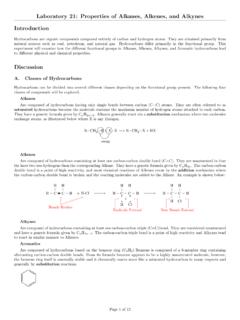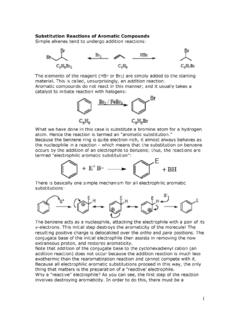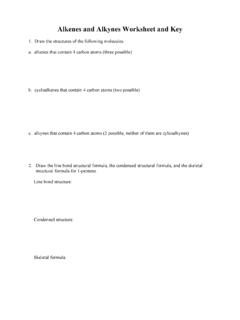Transcription of Carbonyl Chemistry – Fundamentals - UCLA
1 Carbonyl Chemistry FundamentalsIntroductionCarbonyl group : Carbonyl functional groups:Brief Nomenclature of Aldehydes & Ketones1 IUPAC system:- add al to aldehydes- add one to ketonesComparing Alkenes & Carbonyls 2 Alkenes (ethylene) CarbonylsDouble bond is nonpolar and longerDouble bond is polar and shorterDue to polarity, double bond can be an H-bondacceptorBoth sides of an alkene undergo nucleophilicor electrophilic attackCarbonyls undergo regioselective attack bynucleophile or electrophileThe lack of a polar bond results in alkeneshaving a lower boiling point than carbonylsthat are about the same size. ( )Due to polar character (& for some carbonyls,the ability to form H-bonds) of the carbonylgroup, carbonyls have higher boiling points.
2 ( ) 1 ~chm/ ~reusch/ boiling points3:(higher bp) amide > carboxylic acid > nitrile>> ester ~ acyl chloride ~ aldehyde ~ ketone(lower bp)C=C bond has a bond energy of ~146 bond has bond energy that varies:H2C=O 170 kcal/mole RCH=O 175 kcal/mole R2C=O 180 kcal/mole Higher bond energy of the C=O bond of carbonyls suggests that they are thermodynamicallyunfavorable. How can carbonyls undergo a reaction? The polarity of the Carbonyl group and its higher basicity than alkenes lower the transitionstate energy of activation and therefore result in a faster of Carbonyls- Polar double bond creates a partial positive charge on the Carbonyl carbon and a partialnegative charge on the oxygen.
3 _+ C=O _-Three C=O FatesPolar double bond plays a role in determining mechanism of reaction1. Nucleophilic attack at _+ carbon- oxygen (high electronegativity) accepts electron pair helps nucleophilic attack- The product of nucleophilic attack is called a tetrahedral adduct ; it is formed when ansp2 carbon is changed to an sp3 carbon. 3 Bruice, Paula Y. Carbonyl Compounds I. Organic Chemistry . 4th ed. Pg. Attack on a Carbonyl could create a new stereocenter42.
4 Electrophilic attack at _- oxygen- lone pairs & pi bond help electrophilic attack- requires strong acid (H2SO4, H3O+, ROH2+) for protonation3. Enolate formation- resonance stabilization of conjugate base helps enolate formation Enolate HybridMolecular Orbital Diagram of Carbonyl ReactionsThe orbital that contains the lone pairs of the nucleophile overlaps the empty !* antibondingorbital of the carbon of the Carbonyl , resulting in a tetrahedral adduct5. Two Generalized Carbonyl Reaction Mechanisms1. Nucleophilic Carbonyl /acyl substitution- substitution occurs when C=O bears a LG (ie. ester, amide, anhydride, acid chloride,etc.)
5 4 Bruice, Paula Y. Carbonyl Compounds I. Organic Chemistry . 4th ed. Pg. t matter if protonate onlone pair or on pi bond; theproducts are significant contributorbecause none have an open that undergo substitution:2. Addition- addition products result when C=O does not have a LG (ie. aldehydes & ketones)- Carbonyls that undergo addition:Note: Substitution is usually considered first because it is intramolecular (within the molecule)and is therefore Factors that Affect Carbonyl Reaction RateCarbonyl carbon _+:- larger Carbonyl carbon _+ Carbonyl more electronegative faster nucleophilic attackResonance:- more (significance) resonance spreading of e- density Carbonyl lesselectronegative slower nucleophilic attack- When the tetrahedral adduct is formed, resonance may be disrupted.
6 The loss ofresonance results in a higher transition state energy, and would therefore slow thecarbonyl reaction group :- better LG quicker breaking up of tetrahedral adduct faster reactionSteric effects:- more steric hindrance on Carbonyl carbon slower nucleophilic attackRelative reactivities of Carbonyl compounds toward nucleophilic attack6:(most reactive) acyl halide > acid anhydride > aldehyde > ketone > ester ~ carboxylic acid >amide > carboxylate ion (least reactive) 6 Bruice, Paula Y. Carbonyl Compounds II. Organic Chemistry . 4th ed. Pg. ProblemsWhen solving Carbonyl problems:- In the presence of a strong acid, protonate Carbonyl oxygen Consider substitution first because it is intramolecular and Determine the product(s) and write its Determine the product(s) and write its
